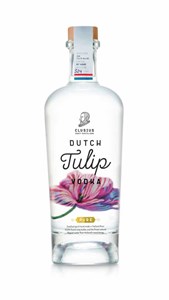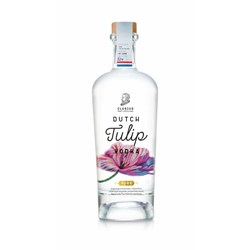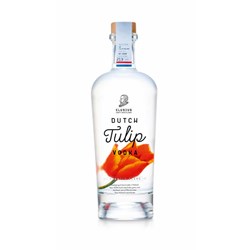With the growing of tulip bulbs, always a range of different bulb sizes are harvested. The largest bulbs will be sold at tulip growers. The mid-size bulbs will be replanted to grow further. The smallest bulbs sometimes are replanted for an additional season but mostly are useless and are used as cow feed.
In case of an organic bulb culture, the smallest bulbs could also be used as source for producing Vodka.
Clusius Craft Distillers in Katwijk ZH (The Netherlands) uses the small organic grown Dutch Tulip bulbs, which will not be used for tulip culture anymore, to make Dutch Tulip Vodka.
The tulips are grown on the low-lying sandy clay soil behind the Dutch coastal dunes. Clusius uses 100% Dutch tulip bulbs, cooked and fermented in a manual process. After making the alcohol, Dutch Tulip Vodka is made with water purified by a natural sand filter: the Dutch sand dunes. Water that is known worldwide for its purity, quality, and crystal-clear taste. A perfect match for a premium Vodka.
The Dutch Tulip Vodka is served in several Michelin Star rated restaurants like 'de Librije' and 'Grand Hotel Huis ter Duin'.


Dutch Tulip Vodka PURE is the world’s first and only spirit to be made exclusively from Dutch tulip bulbs and natural filtered water from Dutch sand dunes. Each bottle is handmade and contains 350 tulip bulbs. A high-end, luxury vodka of unprecedented purity and beauty.

Dutch Tulip Vodka PREMIUM BLEND is a unique vodka made from Dutch tulip bulbs, grain and natural filtered water from Dutch sand dunes. Each bottle contains 40 tulip bulbs. A pristine vodka with a combination of deeper tones, perfect for creating cocktails.
As a residual of the distillation process the mush (crushed and cooked tulip bulbs without starch and sugars) is available for other purposes. At this moment the mush is utilised as cow feed.